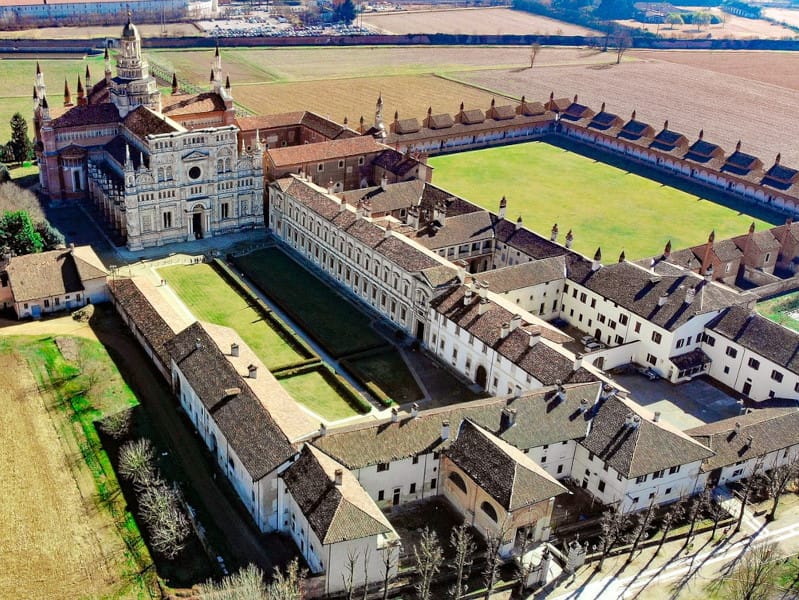Discovering the Hidden Charms of Treviso and Valdobbiadene: A Journey Beyond Venice
Italy’s charm extends far beyond the famous canals of Venice, and one such hidden gem waiting to be explored is the enchanting city of Treviso, just a short distance from the bustling tourist hub. Stepping away from the well-trodden paths, Treviso unfolds a unique blend of nature and urbanization, offering a more authentic Italian experience. Let’s delve into the rich tapestry of history, culture, and culinary delights that make Treviso and its nearby treasure, Valdobbiadene, a must-visit for those seeking a genuine Italian adventure.
Piazza dei Signori: The Heart of Treviso
The beating heart of Treviso lies at Piazza dei Signori, a historical square surrounded by iconic landmarks such as the Palazzo del Podestà, the Palazzo dei Trecento, and the Torre Civica. Nestled amidst bars, arcades, and historic shops, this square serves as the social nucleus of the city, inviting visitors to immerse themselves in its rich history and lively ambiance.
Calmaggiore: Treviso’s Elegant Shopping Haven
Embarking on a journey from Piazza dei Signori, Calmaggiore unfolds as Treviso’s most important shopping street. This elegant alleyway, protected by charming arcades, is lined with boutiques, shops, and historical residences. As you wander, the subtle presence of water, a predominant but discreet element, accompanies your exploration, adding a unique charm to Treviso that sets it apart from its more famous neighbor.
Roman Remnants and the Fountain of Tits on Calmaggiore
Calmaggiore not only offers a shopping haven but also serves as a gateway to Treviso’s rich past. Remnants of the ancient Roman road can be explored through the basement of the shop “Argenteria Marza.” Further along, in the courtyard of Palazzo Zignoli, a reconstruction of the Fountain of Tits awaits, dating back to 1559, providing a unique historical touch to your stroll.
Piazza dei Signori: A Glimpse into Treviso’s Soul
Piazza dei Signori remains the worldly heart and social hub of Treviso, meticulously adorned with elegant arcades, restaurants, bars, and boutiques. The view from this square is dominated by three iconic buildings: the Palazzo del Podestà, the Civic Tower, and the Palazzo dei Trecento. A walk along Calmaggiore from Piazza dei Signori to Piazza Duomo unveils the picturesque charm of narrow alleys and historic houses.
Palazzo dei Trecento: A Romanesque Gem
Built in 1210, Palazzo dei Trecento overlooks Piazza dei Signori and stands as a testament to Romanesque architecture. With its red brick arches, this historical gem hosts city council meetings and showcases 13th-century frescoes during exhibitions. Piazza dei Signori is also home to the Loggia dei Cavalieri, an open arched structure built in 1200 for nobles to engage in board games, a truly unique piece of history.
Palazzo del Podestà and the Tolling Tower Bell
Dominating Piazza dei Signori with its elegant red brick façade, Palazzo del Podestà tells tales of Treviso’s past. Built in the 13th century, this building served as the seat of the Podestà. The tolling of the tower bell every 7th April at 1:00 p.m. serves as a poignant reminder of the bombardment that struck the city in 1944.
Religious Wonders: San Nicolò Church and Piazza Duomo
Despite the neoclassical façade of the Cathedral dominating Piazza Duomo, the Church of San Nicolò steals the spotlight. Built in the 12th century by Dominican friars, this church showcases Treviso’s religious and architectural heritage. Its serene atmosphere invites visitors to explore the treasures within.
Walls, Watercourses, and Tranquility
Treviso’s history is intricately tied to its walls, which have always protected the city. The city’s watercourses offer a picturesque stroll or bike ride, revealing villas with ancient suspended wash-houses, well-kept parks, and an atmosphere of absolute tranquility. A pause on Dante’s bridge allows you to appreciate the poetic union of the Sile and Cagnan rivers.





















